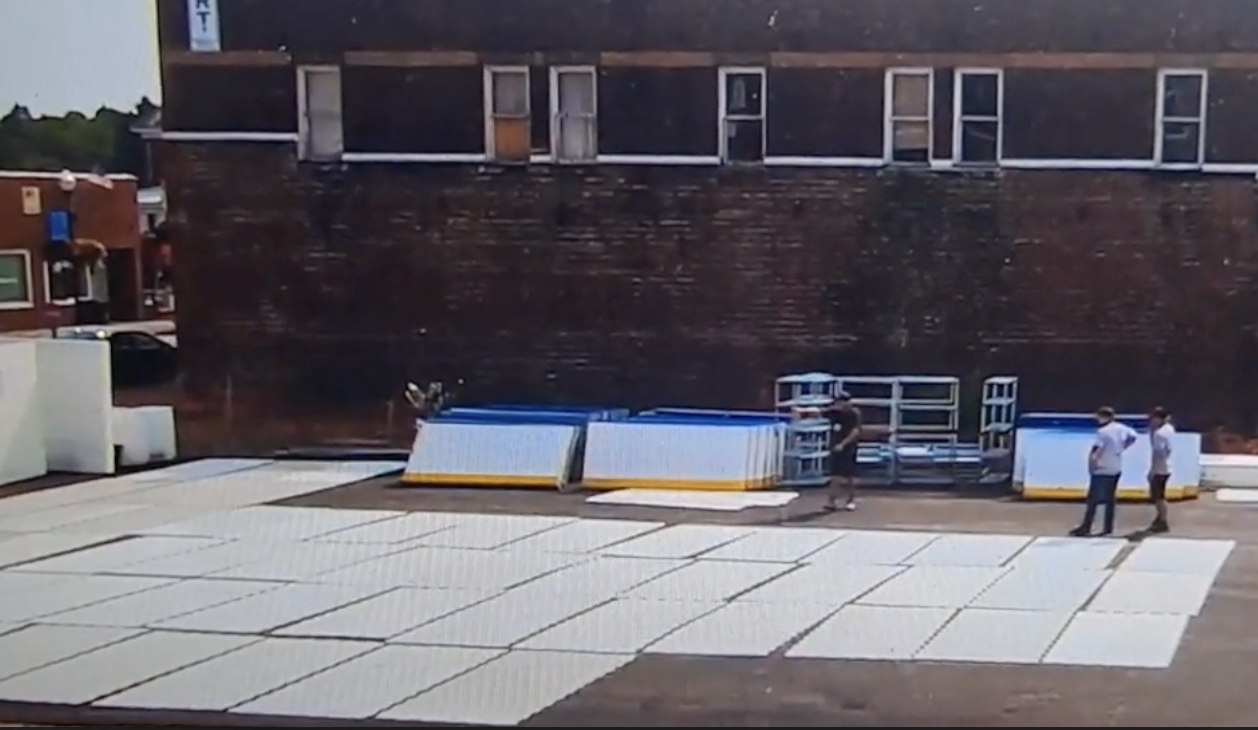by Marc Kohn, Owner, USA Synthetic Rinks
Synthetic Ice Rinks have become wildly popular at festivals, parks, malls, resorts, clubs, and backyards. But why? And what exactly is synthetic ice?
Synthetic ice is an eco-friendly and cost-effective alternative to traditional “real” ice rinks. Synthetic ice is a special blend of plastic formulated into large “panels.” When assembled, the rink surface resembles a huge cutting board. The synthetic surface is durable enough to handle sharp skate blades zipping across it, but also soft enough to allow the skate blade to “grip” the surface and mimic skating on “real” ice.
The six main advantages of hosting a synthetic ice rink:
1. Once the ice panels are produced, there is no energy expenditure to maintain them (no expensive and energy-hungry compressors and chillers that must run 24/7 to keep real ice from melting).
2. There is no chance of mechanical failure that can result in a “melted” rink and considerable “downtime”.
3. There is no need to resurface the ice every hour, and no chance of the Zamboni breaking down and rendering the ice rink unskateable.
4. A “real” ice rink is very expensive to rent/maintain. Synthetic ice rinks are 1/4 the cost and do not require any power to maintain.
5. Synthetic ice rinks can be set up at any time of the year (and over any surface; grass, sand, gravel, hardscape tiles, blacktop, cement, etc.) and perform the same during the hot summer days or cold winter nights! With “real” ice rinks, sunlight and warm temperatures can transform your ice rink into a very shallow pool of slushy water; thus “real” ice rinks are limited to hard, totally flat surfaces during the winter months only.
6. Synthetic rinks can be setup and taken down in just a few hours; “real” ice rinks take a couple days to build/breakdown.
The importance of community: Along with reduced cost and being eco-friendly, another driving factor of synthetic ice rinks is accessibility. Public spaces (street markets, shopping areas, community centers, parks, playgrounds) play a vital role in the social life of communities. They act as a “self-organizing public service”— a shared resource in which experiences and value are created.
A skating rink can be a great platform for people from different social and economic backgrounds to come together and interact, creating a common base that helps to create local attachments, which are at the heart of a sense of community.
Public amenities offer many benefits, including the feel-good buzz from being part of a busy festival and opportunities for children and young people to meet, play or simply hang out. All have important benefits, but the success of a particular public space relies also on people adopting, using and managing the space — people make places more than places make people.
The main takeaway: synthetic rinks exemplify all the good that comes from a popular community gathering spot, bringing the joy of skating and hockey play to communities without the negative environmental impact (excess power to run manifesting in the release of tons of CO2 into the atmosphere) related to the operation of “real” ice rinks. Synthetic ice rinks can be set up anywhere without needing water, electricity, expensive refrigeration machines, or resurfacing equipment.

